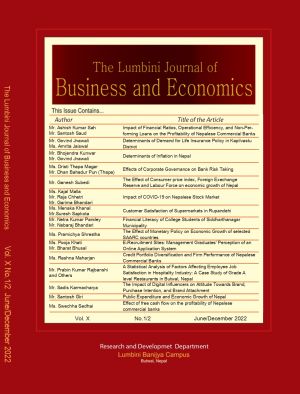Effect of free cash flow on the profitability of Nepalese commercial banks
DOI:
https://doi.org/10.3126/ljbe.v10i1-2.54217Keywords:
Return on assets, return on equity, free cash flow, investing activities, financing activities, dividend payout ratio, firm size, leverageAbstract
This study investigates the impact of free cash flow on the profitability of Nepalese commercial banks. The study analyzes secondary data of 20 commercial banks from 2016/17 to 2020/21, using return on assets and return on equity as dependent variables, and free cash flow, cash flow from investing activities, cash flow from financing activities, dividend payout ratio, current ratio, and bank size as independent variables. The study finds that free cash flow has a positive effect on return on assets and return on equity, while leverage has a negative effect. Cash flow from investing and financing activities has a positive effect on return on assets, and the dividend payout ratio has a positive effect on return on equity. Bank size also has a positive effect on both return on assets and return on equity. However, the current ratio has a negative effect on both return on assets and return on equity. These findings suggest that commercial banks in Nepal can improve their profitability by effectively managing their free cash flow, cash flow from investing and financing activities, dividend payout ratio, and bank size, while minimizing their leverage and current ratio.




